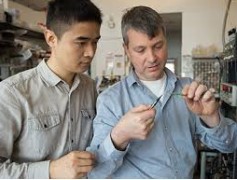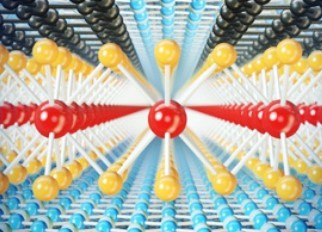Techniques for Studying Atomic Legos and Breakthroughs in Superconductivity Prof. James Hone, Wang Fong-Jen Professor of Mechanical Engineering, Columbia University
- 30 May 2017
- Volume 10
- NanoScientific Magazine, Summer 2017

Wang Fon-Jen Professor Of Mechanical Engineering
Columbia University
Dr. James Hone’s group is an interdisciplinary research group focused on novel materials synthesis and device nano-fabrication. We use carbon nanotubes, graphene, self-assembled nanostructures, and textured substrates to study both fundamental properties and explore new applications in nano-electro-mechanical systems, biomechanical systems, nanoscale and molecular electronics and opto-electronics. The research has diverse applications in radiofrequency signal processing electronics, optical signal processing, energy generation, biological and molecular sensors, and immunology. The group is highly collaborative and works with research groups in Physics, Chemistry, Material Science, Electrical Engineering, and Mechanical Engineering.
Over the past 10 years, these Columbia researchers have performed pioneering work in the first such 2D material, graphene—an atomically thin form of carbon. In the past five years, the field has expanded to include a large number of other materials—insulators, semiconductors, metals, and exotic materials such as superconductors.
In 2013, Dr. Hone’s group of researchers demonstrated for the first time that it was possible to electrically contact an atomically thin two-dimensional (2D) material only along its one-dimensional (1D) edge, rather than contacting it from the top, which has been the conventional approach. Known as Atomic Building Blocks, techniques for stacking these Atomic Legos and improving the quality is part of the Hone Group’s mission. “We work with many materials and techniques for handling and assembling 2D materials,” states Hone. They look at graphene 2D material for example separated into single atomic layers and develop techniques to restack them into heterostructures. Research on graphene and other 2D atomic crystals is intense and likely to remain one of the hottest topics in condensed matter physics and materials science for many years.
The goal is to study single materials in the cleanest possible way for example encapsulated graphene in a cleanest possible environment. Then they can start combining them to get new functionality. Once the new functionality is achieved, they can create interfacial superconductivity by putting two layers together.
Dr. Hone’s group has developed novel breakthroughs in superconductivity using stacks of 2D materials. One area is modulating light for optoelectric devices. The future area of study includes examining how much of what we do now with electrical signals can be done with light.

“OUR RESEARCH FOCUSES ON BASIC UNDERSTANDING OF HOW TO ASSEMBLE THESE NANO BUILDING BLOCKS INTO MATERIALS AND STRUCTURES, AND WHAT PROPERTIES EMERGE WHEN WE DO SO. THIS UNDERSTANDING WILL ULTIMATELY LEAD TO CONCEPTUALLY IMPORTANT AND USEFUL NEW ELECTRONIC/ MAGNETIC DEVICES, OPTOELECTRONIC SYSTEMS, AND THERMOELECTRIC MATERIALS “ JAMES HONE, PAS3 DIRECTOR
In 2015, Columbia University was awarded a $15 million six-year grant from the National Science Foundation for a new Materials Research Science and Engineering Center (MRSEC) the Center for Precision Assembly of Superstratic and Superatomic Solids (PAS3) under the direction of Professor James Hone. Research partners include Brookhaven National Laboratory, IBM, and DuPont, as well as universities and research institutes in Japan, Korea, and Europe. The center comprises two interdisciplinary research groups (IRGs) focused on building higher-dimensional materials from lower-dimensional structures with unprecedented levels of control. Each IRG is targeted at demonstrating the promise of creating novel materials with new functionality and exceptional properties.

THE SHARED MATERIALS CHARACTERIZATION LABORATORY PROVIDES MICROSCOPY, SPECTROSCOPY AND DIFFRACTION INSTRUMENTS FOR MATERIALS RESEARCHERS IN CHEMISTRY, PHYSICS, AND ENGINEERING. THE FACILITY SPECIALIZES IN THE CHARACTERIZATION OF SURFACES, FILMS, MAGNETIC MATERIALS, LAYERED MATERIALS AND OTHER NANOSTRUCTURES, AND CRYSTALLINE/ POLYCRYSTALLINE MATERIALS.
The MRSEC provides crucial research funding to develop fundamental understanding of these new materials and realize their potential for application. It focuses on new materials with novel properties useful for magnetic memory; power conversion; and phase transitions that may be induced by optical, mechanical, thermal, and other stimuli and brings together researchers from a diverse background from many institutions.

Sunwoo Lee, Ph.D. Student in the Hone Group at Columbia University is currently conducting a force-displacement test on the fabricated graphene accelerometers using an atomic force microscope (AFM) to validate their theoretical sensitivity.
